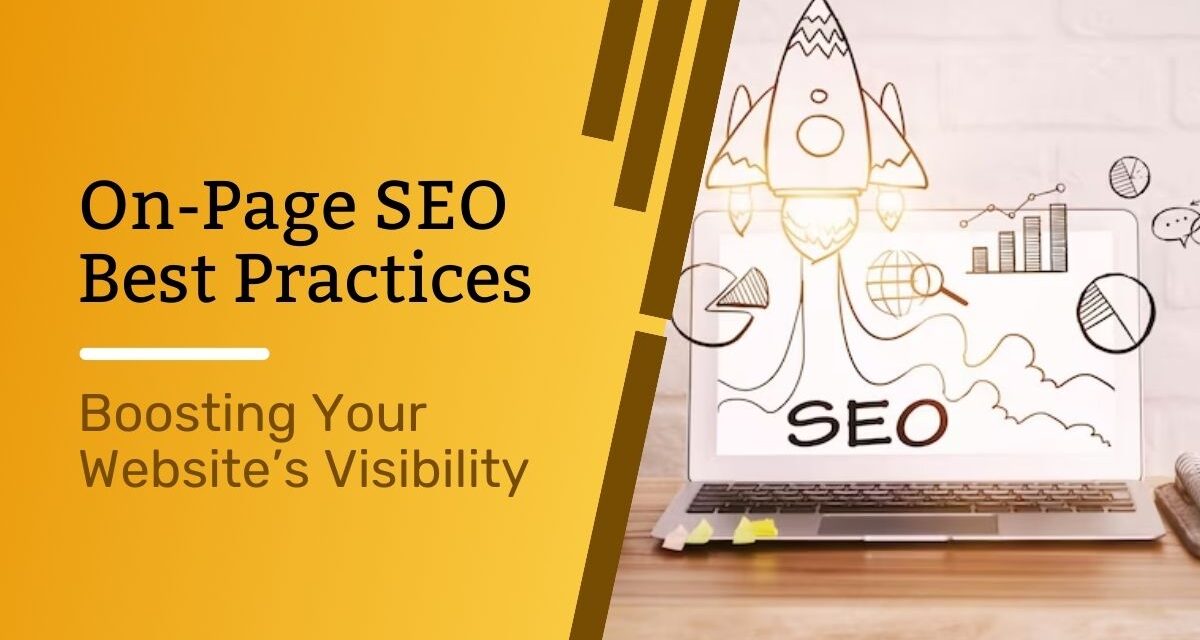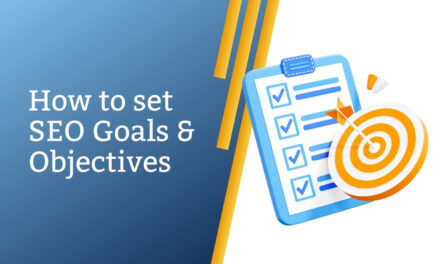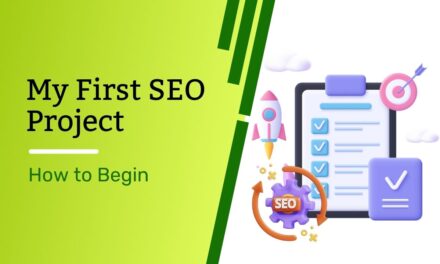In a world dominated by the internet, having a website is almost a prerequisite for any business or individual. Whether you’re running a small blog or managing a multi-million-dollar e-commerce site, one thing is certain – you want people to find your website. That’s where On-Page SEO (Search Engine Optimization) comes into play. In this article, we’ll walk you through the best practices to optimize your website and make it more visible to search engines, all while keeping it simple and jargon-free.
Table of Contents
- What is On-Page SEO?
- The Importance of Keyword Research
- Crafting High-Quality Content
- Optimizing Your Meta Tags
- Using Descriptive Headings (H1, H2, etc.)
- The Power of Internal Linking
- Mobile-Friendly Design Matters
- Speed Up Your Website
- User Experience and User Engagement
- Regularly Update Your Content
- Image Optimization
- Secure Your Website with HTTPS
- The Role of Social Signals
- Monitor and Analyze Your Progress
- Conclusion
Now, let’s dive into the details!
1. What is On-Page SEO?
On-Page SEO refers to the practices and techniques used to optimize individual web pages to rank higher in search engine results. It’s like preparing your shop window to attract more customers. On-Page SEO focuses on elements within your control, making your website more appealing to both search engines and human visitors.
2. The Importance of Keyword Research
Keywords are the foundation of SEO. These are the words and phrases that people type into search engines. Research and select relevant keywords that reflect your content. Tools like Google’s Keyword Planner can help you identify high-traffic keywords in your niche. Use them strategically in your content.
3. Crafting High-Quality Content
The heart of On-Page SEO is high-quality content. It’s like the menu of a restaurant – if it’s delicious and varied, more people will come. Create informative, engaging, and valuable content that resonates with your target audience. Regularly update your content to keep it fresh and relevant.
4. Optimizing Your Meta Tags
Meta tags include your meta title and meta description. These are like your website’s business card. Craft a compelling meta title (up to 60 characters) and a descriptive meta description (up to 160 characters) with your target keyword. Make it enticing to entice clicks from search engine users.
5. Using Descriptive Headings (H1, H2, etc.)
Headings are like chapter titles in a book. Use descriptive headings, starting with H1 for the main title, followed by H2, H3, and so on for subheadings. This structure helps both readers and search engines understand the content hierarchy.
6. The Power of Internal Linking
Think of internal links as a map within your website. They guide visitors to relevant pages on your site, improving user experience and encouraging them to stay longer. Link to related articles or products within your content.
7. Mobile-Friendly Design Matters
In our mobile-first world, having a responsive website design is crucial. If your website looks terrible on mobile devices, you’ll lose a substantial portion of your audience. Ensure your website is mobile-friendly for better SEO and user experience.
8. Speed Up Your Website
Speed matters, and nobody likes a slow-loading website. Use tools like Google PageSpeed Insights to assess and improve your website’s loading speed. Compress images, minimize code, and utilize content delivery networks (CDNs) to boost your site’s speed.
9. User Experience and User Engagement
User experience (UX) is pivotal. If users find your website confusing or difficult to navigate, they’ll leave. Ensure your website is intuitive, easy to navigate, and visually appealing. Engage your audience with interactive elements like surveys, comments, or social media integration.
10. Regularly Update Your Content
Imagine your website as a garden that needs constant tending. Regularly update your content to reflect changes in your industry or field. Fresh content signals to search engines that your site is active and relevant.
11. Image Optimization
Images add visual appeal to your content, but they can also slow down your website if not optimized. Compress images, use descriptive file names, and add alt text to make them more SEO-friendly.
12. Secure Your Website with HTTPS
Security is a top priority. Switch to HTTPS to encrypt the data exchanged between your website and visitors. Secure websites are favored by search engines and trusted by users.
13. The Role of Social Signals
Social media presence can influence your SEO. Share your content on social platforms to increase visibility and engagement. The more people share and talk about your content, the more search engines take notice.
14. Monitor and Analyze Your Progress
Use tools like Google Analytics and Google Search Console to track your website’s performance. Monitor your search engine rankings, traffic, and user behavior. Adjust your strategy based on the data you gather.
15. Conclusion
In conclusion, On-Page SEO is the key to making your website stand out in the digital crowd. By following these best practices, you can enhance your website’s visibility, attract more visitors, and ultimately achieve your online goals. Remember, SEO is an ongoing process, so stay committed to the optimization journey.
FAQs
1. What is the difference between On-Page SEO and Off-Page SEO?
On-Page SEO focuses on optimizing individual web pages through content, meta tags, headings, and more, while Off-Page SEO deals with external factors like backlinks and social signals that influence your website’s authority and trustworthiness.
2. How often should I update my website’s content?
Frequent updates are beneficial, but there’s no strict rule. It depends on your niche and the pace of changes. As a general guideline, aim to update your content at least every few months to keep it fresh and relevant.
3. Why is mobile-friendly design important for SEO?
Mobile-friendly design is essential because Google prioritizes mobile indexing. If your website isn’t mobile-friendly, it may not rank as well in mobile search results, leading to a loss of potential visitors.
4. Can I do SEO without using keywords?
Keywords are a fundamental part of SEO, but you can focus on other aspects like content quality, website speed, and user experience. However, using relevant keywords strategically will significantly improve your SEO efforts.
5. How long does it take to see results from On-Page SEO?
SEO is a long-term strategy, and results may not be immediate. It can take several weeks to months to see significant improvements in your website’s rankings and traffic. Stay patient and persistent in your efforts.
Incorporating these On-Page SEO best practices into your website management strategy will not only improve your search engine rankings but also enhance the overall user experience. Remember, SEO is an ongoing journey, so stay consistent and adapt to the ever-evolving digital landscape.





